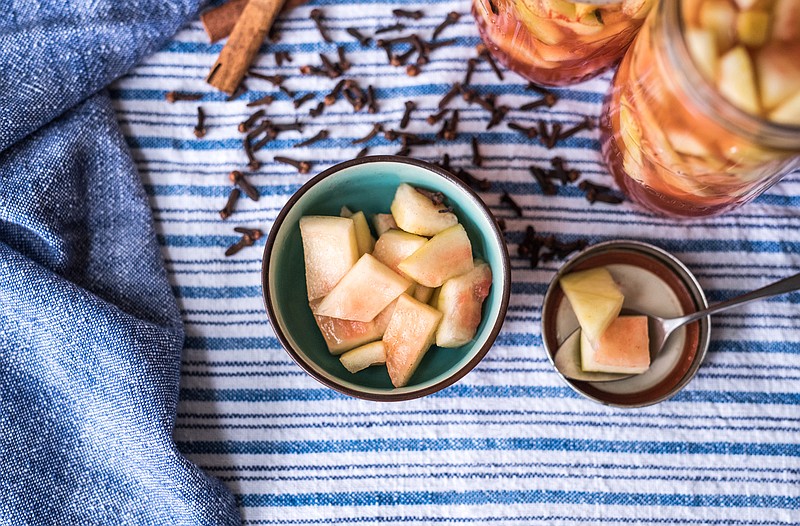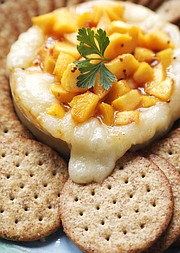PHILADELPHIA-As children, many of us were warned in jest that swallowing watermelon seeds would make melons grow in our bellies.
In truth, those pesky seeds can be beneficial to your health. So, too, is the rind, so think twice before tossing them out.
"Watermelon's health benefits extend well beyond its juicy flesh," says Theresa Shank, a registered dietitian and owner of Philly Dietitian. "The seeds offer almost the same nutrient density of other more common seeds, like pumpkin and sunflower, and the rind is among the richest edible sources of L-citrulline, an amino acid that has been studied extensively in its relation to heart health."
A good source of healthy fats, protein, vitamins and minerals such as iron, folate, and magnesium, the seeds actually prove to be as smart of a snack as the fruit itself. Toss them in the oven for a quick bake, and it becomes easy to flip what's traditionally perceived as a nuisance into an absolute delight.
Add the roasted seeds to your next salad, yogurt bowl, or even slice of toast for an element of crunch and hint of nutty flavor.
"They're relatively low in calories, too-about 160 calories per one-ounce portion, or essentially a palmful," says Shank, who recommends munching on them straight out of the oven.
As for the rind, it serves well as a crunchy component, too, whether tossed into a stir fry or pickled and plated alongside a sandwich or smoky barbecue. A pickled rind creates a great salad topper.
To use in a stir fry, remove the rind's outer layer of green skin with a knife, reserving the white part to julienne into matchsticks. Sauteed over high heat, the rind will soften in as little as five minutes, absorbing the flavors of what it's placed within. Watermelon rind is most commonly incorporated into Asian-inspired dishes, sauteed alongside ingredients such as sesame oil, soy sauce, ginger and garlic. Add in such veggies as carrots and peppers, and a protein such as shrimp, tofu, or chicken, to craft a quick and effortless meal.
For an easy quick-pickle rind, check out the recipe that follows. Courtesy of Brine Street Picklery, a Philly-born and-brined picklery, the recipe calls for a mixture of vinegar, sugar and spices that's used to soak and soften the rind. What results is a slightly tangy and sweet pickle that resembles the flavor of a classic bread-and-butter-style pickle, with small hints of clove and ginger.
With only a few weeks remaining until the official start to fall, get out there and embrace summer, from rind to seed, before it's too late.
BRINE STREET PICKLED WATERMELON RIND
Yields 2 quarts of pickled white rind
1 watermelon, smaller, circular size
1 tablespoon kosher salt
2 cups water
1 1/2 cup white vinegar
1 1/2 cup rice vinegar
2 cups white sugar
1 cup fresh watermelon juice (from pink inner flesh)
1 cinnamon stick, broken in half
8 whole cloves
1 1-inch piece of fresh ginger, thinly sliced
Cut watermelon into four sections. Use a peeler or a pairing knife to carefully remove the green skin. Then, remove the pink flesh, setting about three cups of the fruit aside to make the watermelon juice. (Save the rest to snack on later!)
Using a small pairing knife, cut the white rind into 1-inch-by-1-inch squares. Put the squares of white rind into a mixing bowl, and add salt. Mix; set aside for 30 minutes.
Take the three cups of reserved pink flesh, and puree in food processor or blender until completely liquefied. Strain 2 to 3 times to remove as much pulp as possible.
In a stainless steel pot, add water, vinegars, sugar, watermelon juice, cloves, cinnamon stick, and ginger. Bring to gentle boil and cook for 8-10 minutes, using a spoon to remove any pulp that rises to the surface.
Divide the white rind squares between mason jars or plastic half-quart containers. Pour hot brine over the rinds. Place lids on the containers/jars and refrigerate for 2-3 hours. Store in the refrigerator and use within one week.
-Brine Street Picklery
ROASTED WATERMELON SEEDS
Yields about 1/4 cup, depending on the size of the watermelon used to collect the seeds
Watermelon seeds (black seeds only)
Coconut oil
Salt
Fill a medium-size bowl with water, and add salt until water is heavily salted. Place seeds in the bowl, and let sit for 1 to 2 hours.
Preheat oven to 325 degrees Fahrenheit. Line a baking sheet with parchment paper. Drain the seeds and place on a towel to pat dry; use the towel to remove any goo around the seeds, if possible.
If coconut oil is firm, place a tablespoon or two in the microwave for 10 to 30 seconds, until melted. Toss the seeds with coconut oil, adding a little bit at a time until the seeds are lightly coated. The more seeds you get from your watermelon, the more coconut oil you will need.
Scatter seeds in a single layer onto the baking sheet. Roast seeds for 25 to 35 minutes, until crisp, stirring after 15 minutes. Transfer to a paper towel and allow the seeds to cool completely before eating. To store, place seeds in a sealed container in the refrigerator.


